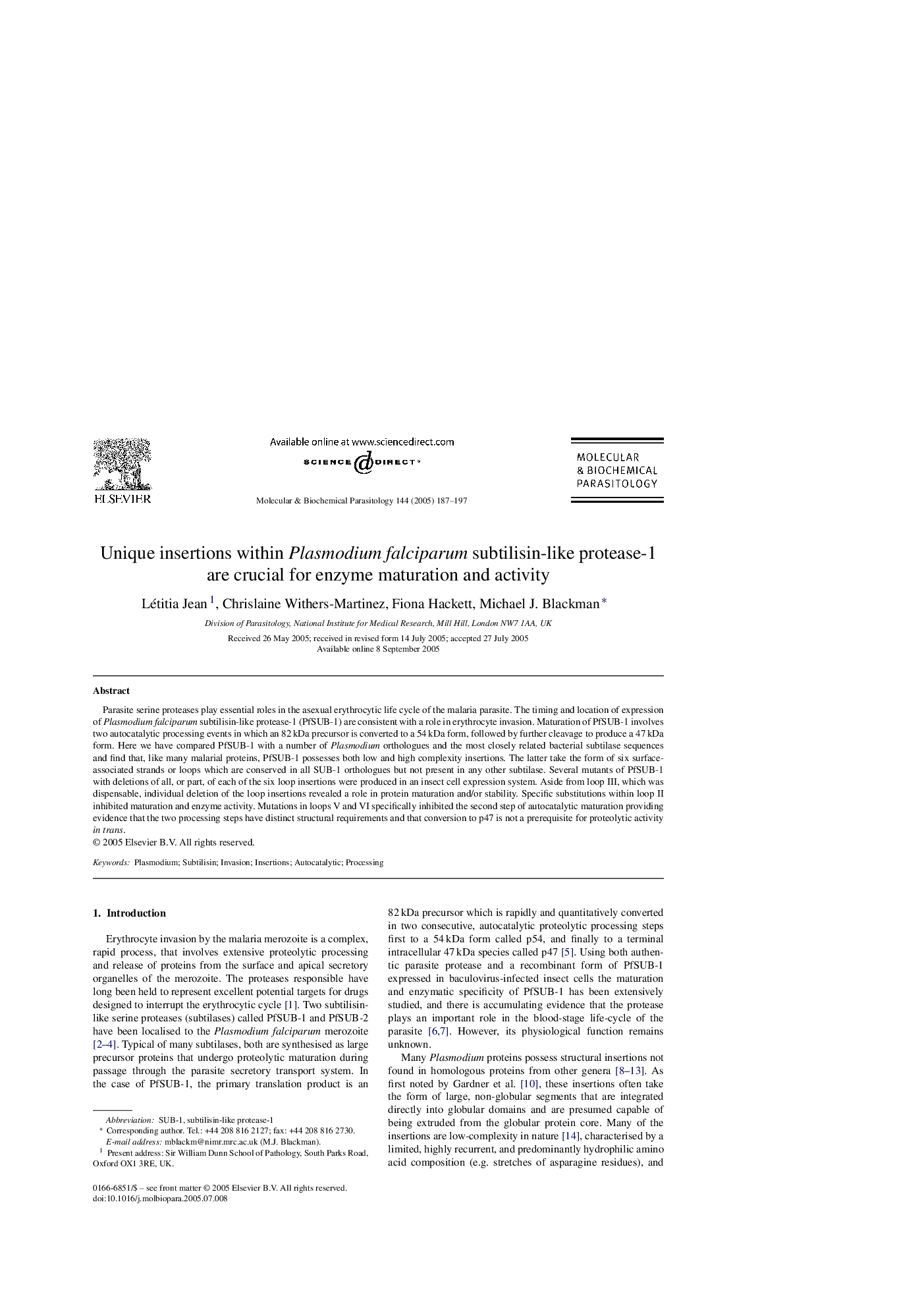| Article ID | Journal | Published Year | Pages | File Type |
|---|---|---|---|---|
| 9139924 | Molecular and Biochemical Parasitology | 2005 | 11 Pages |
Abstract
Parasite serine proteases play essential roles in the asexual erythrocytic life cycle of the malaria parasite. The timing and location of expression of Plasmodium falciparum subtilisin-like protease-1 (PfSUB-1) are consistent with a role in erythrocyte invasion. Maturation of PfSUB-1 involves two autocatalytic processing events in which an 82Â kDa precursor is converted to a 54Â kDa form, followed by further cleavage to produce a 47Â kDa form. Here we have compared PfSUB-1 with a number of Plasmodium orthologues and the most closely related bacterial subtilase sequences and find that, like many malarial proteins, PfSUB-1 possesses both low and high complexity insertions. The latter take the form of six surface-associated strands or loops which are conserved in all SUB-1 orthologues but not present in any other subtilase. Several mutants of PfSUB-1 with deletions of all, or part, of each of the six loop insertions were produced in an insect cell expression system. Aside from loop III, which was dispensable, individual deletion of the loop insertions revealed a role in protein maturation and/or stability. Specific substitutions within loop II inhibited maturation and enzyme activity. Mutations in loops V and VI specifically inhibited the second step of autocatalytic maturation providing evidence that the two processing steps have distinct structural requirements and that conversion to p47 is not a prerequisite for proteolytic activity in trans.
Related Topics
Life Sciences
Biochemistry, Genetics and Molecular Biology
Molecular Biology
Authors
Létitia Jean, Chrislaine Withers-Martinez, Fiona Hackett, Michael J. Blackman,
